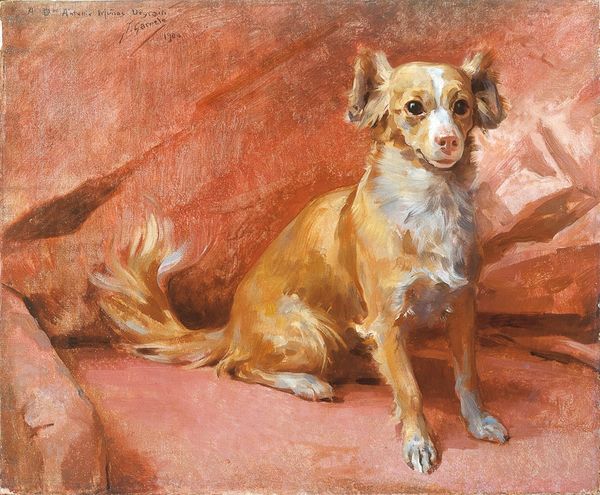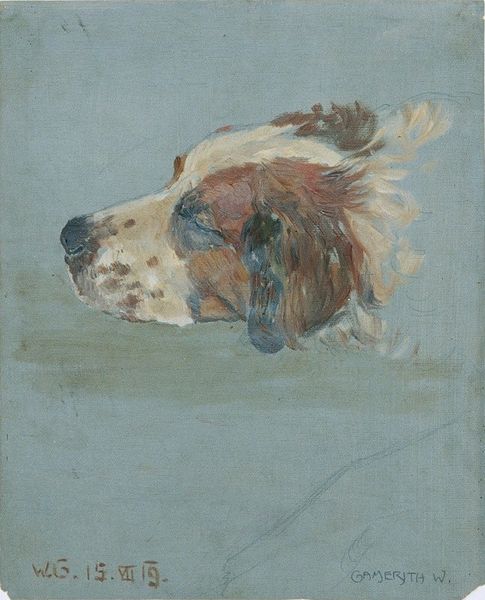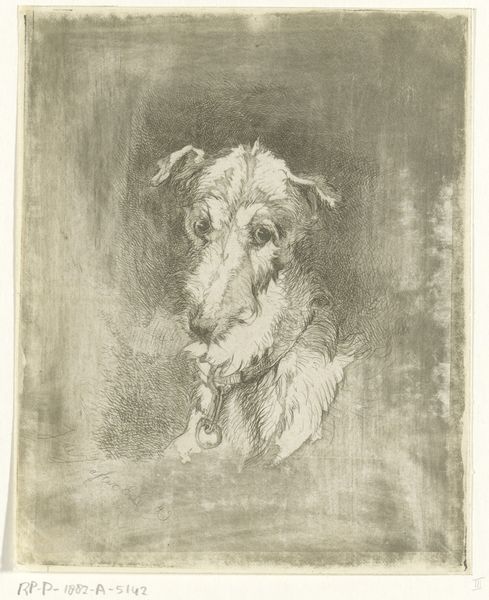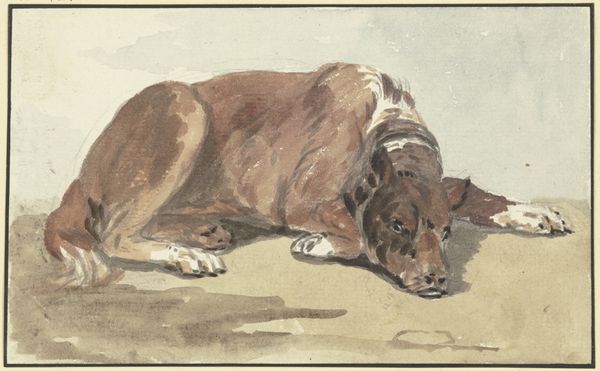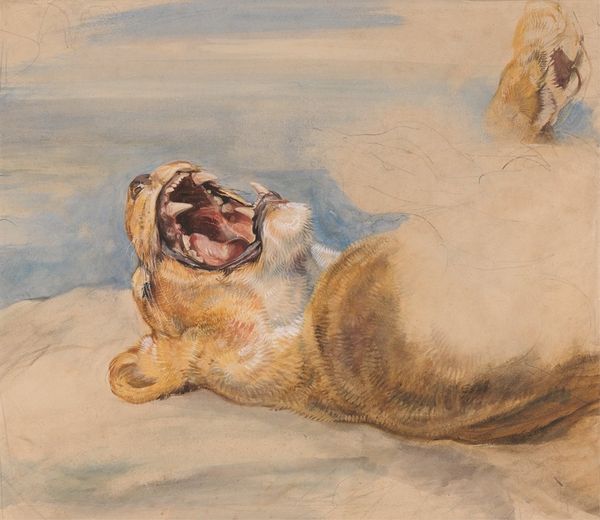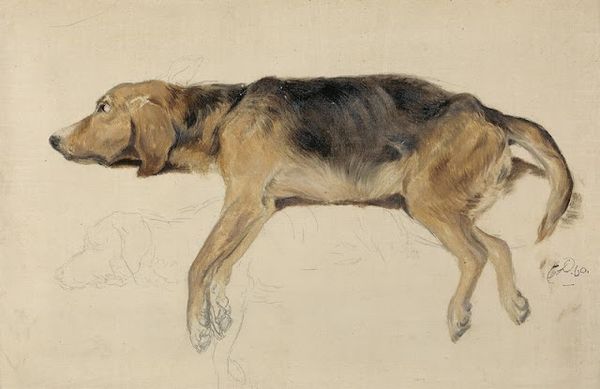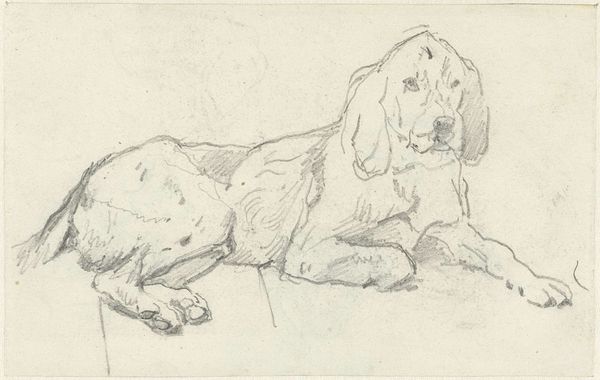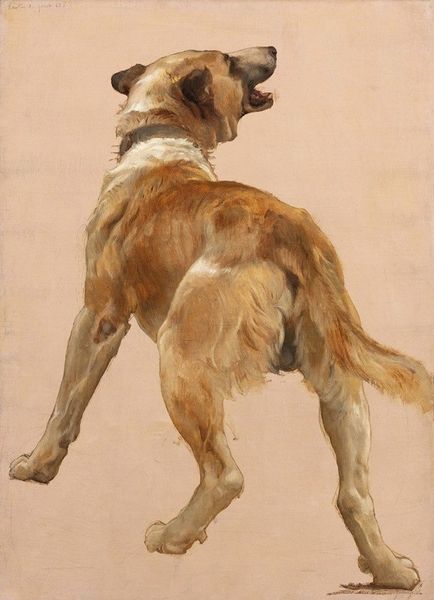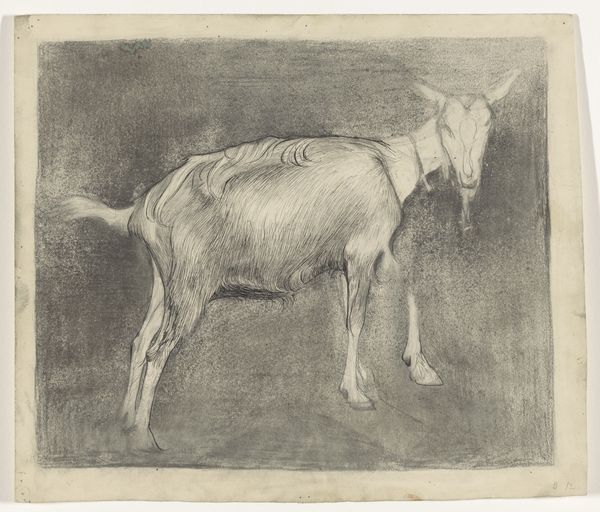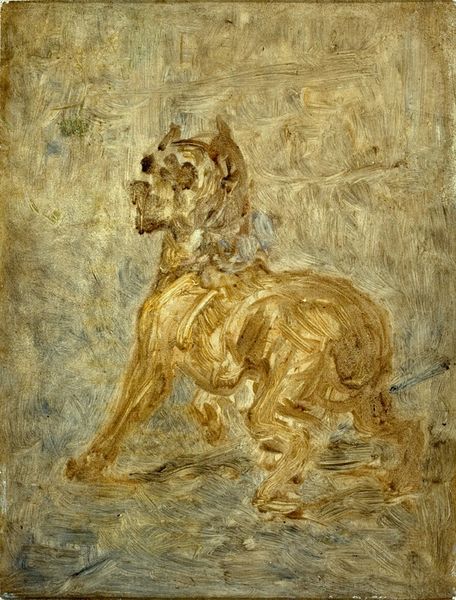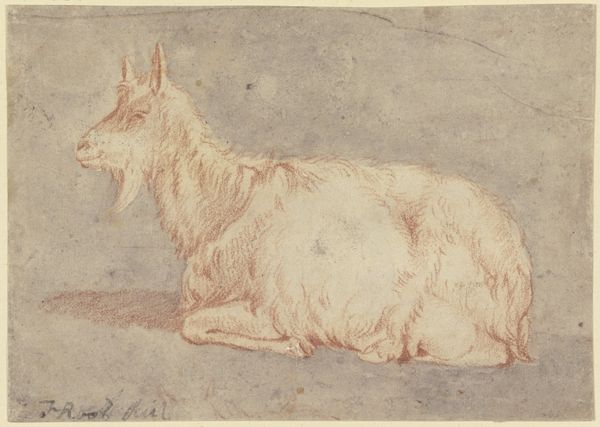
painting, oil-paint
#
portrait
#
animal
#
painting
#
oil-paint
#
oil painting
#
expressionism
Copyright: Public Domain: Artvee
Curator: Let's take a closer look at Zygmunt Waliszewski's "Lying Dog," an oil painting likely completed between 1913 and 1914. It’s a fairly small piece, focusing solely on the animal itself. What strikes you immediately? Editor: The colour palette is the first thing that jumps out. It has a strangely comforting, almost melancholic air. The browns and creams of the dog against the reds and oranges…it evokes a subdued domesticity, don't you think? Curator: Absolutely. And consider Waliszewski's choices regarding the oil paint. See how the brushstrokes are visible? There’s an immediacy in the application of pigment to canvas; he's less interested in illusion and more interested in registering the *process* of painting. We aren’t really sure what the animal is lying *on*, are we? It feels almost incidental, with the brush strokes working in any direction. Editor: It’s certainly less about rendering precise details. More interesting is how Waliszewski seems to capture the essence of a domestic animal’s downtime. Dogs are loaded symbols in art history – fidelity, guardianship. But here, we see simple rest. Look at the curve of its spine! What I wonder is whether the collar means this is a pet and what Waliszewski is trying to convey of this relationship? Curator: Well, to see the social context through those material decisions helps us to understand more about what he wanted us to think about ‘domesticity’ then. How easy and ready were domestic items and what would they convey? Editor: That is very true, yes. You mentioned fidelity. Dogs also stand in for a kind of unquestioning loyalty; a devotion earned by providing food and shelter, so is Waliszewski inviting comment on societal inequalities, where individuals provide loyalty in return for basic resources? Curator: Possibly, and that might be heightened by the expressionistic style. Look how Waliszewski is playing with paint: how quick, thick daubs combine, suggesting that an accurate picture – and therefore a realistic understanding – of the lower classes might always be out of reach of the elite? Editor: It certainly throws layers into such a small painting, doesn't it? All those potent visual shorthands swirling within this single image. Curator: Indeed. I see Waliszewski’s focus on materials reflecting broader trends in art at the time, and you uncover all those meanings attached to its symbols. Quite enriching, isn’t it? Editor: Absolutely. And now I think I will go home and cuddle my own dog.
Comments
No comments
Be the first to comment and join the conversation on the ultimate creative platform.
